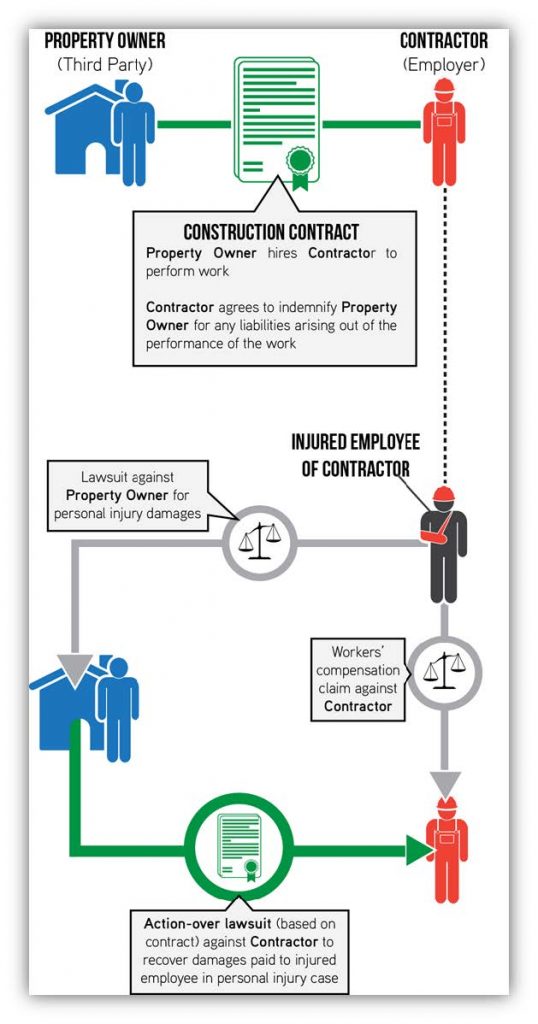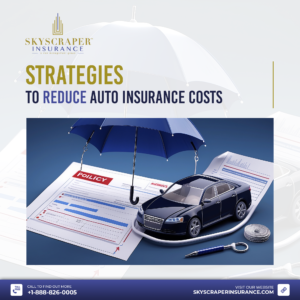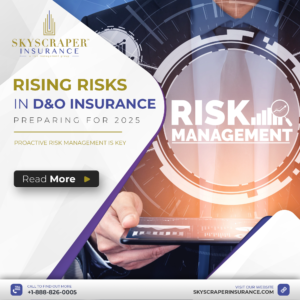Action Over Liability Exclusions
Action-over issues are misunderstood by a lot of contractors and insurance brokers in New York. It’s a pretty confusing topic, so we’re
going to simplify it. And to do that, we’re going to give you an example. In this example there are only three parties that we need to be
aware of. The first one is the contractor who is going to be doing a job or a project. The second party to this deal is the employee who
works for the contractor and the third party to this agreement is the project owner or the property owner. Now prior to starting a job,
the owner of the property or the project is going to send the contractor a construction contract and within that contact is going an
indemnity agreement, very common. An indemnity agreement or a hold harmless agreement as we commonly call them, says something
like that the contractor promises to indemnify and hold the property owner harmless from any or all claims which may arise during the
course of construction. They’ll also ask for a certificate of insurance naming the owner and maybe other entities as additional insurance
on the contractor’s policies.
How Action Over Claims Occur
So, during the course of construction, the employee, party number two that we talked about is injured during the course of
construction. Normal work place injury, but it’s pretty serious. So the employee files a claim with the contractor’s workers
compensation insurer. The claim handles all of the medical bills and pays all the loss wages while that worker is out of work. Now half
way through this claim’s process, the employee decides that they’re also going to sue the property owner for negligence to maintain a
safe workplace. Now we don’t need to talk about whether the workplace was safe or unsafe or who had control of it or who didn’t
control of it. The simple fact is that we’ve got a multimillion dollar lawsuit that the employee has filed against the property owner. Now
the property owner is going to take that lawsuit and they’re going to tender it, or give it over, to the contractor. Under the terms of the
construction contract, we mentioned earlier, the indemnity agreement makes the contractor responsible for any or all claims which could
arise from the performance of that job and this is one of them. So the contractor takes that claim and they bring it to their insurance
broker.
Action Over Exclusions
Now here’s the rub, contractor’s insurance in the down state New York, especially in the Five Boros can get very expensive. So this
particular contractor decided that they were going to exclude action-over liability in their general liability policy and that’s a real
problem. Another way that this can happen is that an unscrupulous broker maybe competing on a contractor’s liability insurance and
bid 30-50% less. We’ve seen this happened and they don’t disclose why it was so much cheaper. The reason that it’s cheaper is because
action-over claims are excluded and unfortunately, the contractor didn’t asked enough questions and actions-over claims are going to be
excluded.
However this happened, whether it was the contractor trying to save a few dollars or it was due to an unscrupulous broker, it really
doesn’t matter at this point. The contractor has a multi-million dollar lawsuit on their hands and they’ve got a contractual obligation to
indemnify for it and what are they going to do? They’re either going to try to give it back to the property owner. They don’t want it, the
property owner’s liability insurance company doesn’t want it – they’ll ultimately have to pay the claim but they’re going to subrogate
against the contractor under the terms of the contract. So what ultimately happens in many cases is that the contractor has to go
bankrupt. It’s probably not the best situation. You’ve put your entire life’s work into a business and now you have to go in to
bankruptcy because you didn’t have the right insurance coverage.
Compounding the Problem
Now what compounds this problem even further in some situations is that endorsements or exclusions in some liability policies, don’t
specifically say, “Action Over Claims Excluded” – they’re going to have different wordings and that’s going to mask the problem.
I’m going to read some of the titles of these exclusions. They can be: ‘amendment to employee injury exclusion’ or ‘amendment of
definition of employee injury’ or ‘carved back of contractual liability’ or something else like that. And like I said, that masks the real
issue. So you may not even understand that you don’t have the coverage even if you read your policy.
Look, I realize that liability insurance in the Five Boros and downstate New York is really expensive and if you’re working at height,
meaning you’re on a ladder or something, you’re a painting contractor, masonry, drywall, those sorts of trade – it gets even more
expensive and very limited availability. But the question is – do you want to have coverage for third party action over claim or not? And
I really recommend that you have it because these kinds of claims happen and they happen with regular frequency and they get very
expensive.





